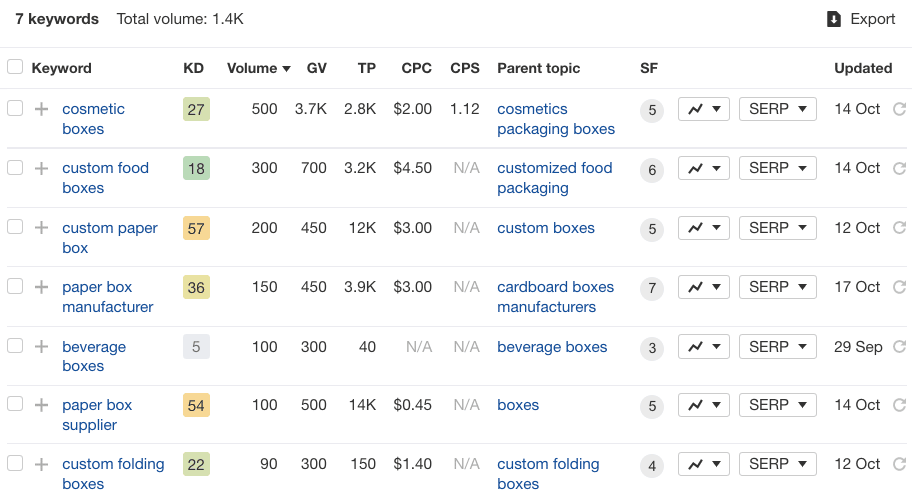
Ranking Fluctuations vs Ranking Drops: When You Should Be Alarmed
It’s pretty common to go into panic mode whenever you see that your site has dropped in rankings for a precious keyword. You spend hours investigating, coming up with an action plan, and trying to get those positions back ASAP.
In some cases, you will have to implement some optimization to see improvements. However, more often than not, you find out you wasted your energy once it gets those positions back just a few days after – no adjustments needed.
So, when should you chill after a few positions are missed, and when should you actually be worried? We’ve come up with a brief explanation on how to tell whether you’ve had a ranking drop or you’re just experiencing a normal fluctuation.
Ranking Fluctuations vs Drops: Learn to Tell The Difference
Normal ranking fluctuations happen on a daily basis, especially considering that Google tailors each SERP to the specific user that’s performing the search. So, even though your rank tracking tool of choice shows that you’re ranking number one for a certain keyword, you won’t necessarily appear in the first position for absolutely everyone.
That being said, one of the first steps to understanding whether you’ve had a ranking drop or just normal fluctuations is to look at the SERP landscape weekly and monthly.
Although it’s valid to check rankings daily, actual changes take time. It’s likely that you’ll get those positions back within a few weeks. Play the waiting game for a little bit before you actually put effort into creating an action plan.
You can also assess how drastically your page has dropped. If you dipped only a few positions, you’re probably looking at a fluctuation. Now, if you lost dozens of them, maybe there’s an underlying issue that needs to be checked.
Common Reasons for Ranking Fluctuations
1. Reporting Errors
The most common reason we see a huge ranking drop is actually due to faulty reporting. Rank trackers are tools, and tools break. Some more often than others.
For instance, Ahrefs is a very popular tool among SEOs, but as a rank tracker, it falls short. This is due to the fact that it doesn’t update keywords on a daily basis. You can see when a keyword was last updated, and you can update the information as well, but it does not reflect on an individual domain, at least not quickly.
It’s very common to see old data for SERPs on Ahrefs. In the example below, you can see some keyword research that was performed on October 27. The data for many of the queries hadn’t been updated in at least two weeks, and up to a month. Overall, it’s a very unreliable source for rank tracking.

Dedicated rank-tracking platforms generally update keyword rankings on a daily basis, and they are generally searching for your specific domain. We use Trackright to track keyword rankings because it gives us a plethora of options, including the location to search from.
2. Local Search
Local search can play a huge role in the position of your website on the SERPs. And because of this, we recommend having consistency in when and how you rank track.
We say this because you can do the exact same search on Google from two different locations and have two very different results. The easiest way to understand this is to search for “ice cream shop” from your house, and then perform the same search from your job (given that you have to travel to an office in a different location for work).
Google is showing highly localized results, and this is because it understands the search intent – i.e. the user wants to get ice cream right now. If you perform a search for “best ice cream shops near me,” you will probably get different results with shops that are a bit further away, but considered “better”.
What does this mean? When you search for a keyword related to your website from two different locations, you might show up in a different position. So make sure you are performing manual searches from the same location.
Or even better: don’t perform manual searches at all. Using a rank tracker like Trackright can bypass that because the tracker will always search from the same location. Therefore, this is the option we recommend for tracking rankings over a longer period of time.
3. User Context
Just as you need to ensure your location isn’t affecting your SERP, the same goes for the context of your search. Google doesn’t take only the query you typed into consideration, but many other factors that help tailor the SERP to your specific search intent. These include:
- The language on your device or Google account.
- Your device type (mobile or desktop, OS, etc.).
- Your search history.
- Other data that Google has collected about your habits on the internet.
Again, these discrepancies can be avoided using a rank tracker such as Trackright.
4. SERP Testing
When you have a page that’s established itself in a specific position, you’re bound to see fluctuations between its own group. Results #1 to #4 usually switch places often, and so do the results on the lower half of the first page. It’s completely normal.
This usually happens because Google’s main goal is to show the best results possible according to the search intent. Therefore, it runs tests every now and then to assess which result has the best CTR and keeps users engaged for the longest period of time.
5. New Website
If your website is new or at least relatively new (let’s just call it under a year), it’s very important to know that your rankings will fluctuate wildly. It’s a very common sight to see your brand new website rank extremely high right off the bat. And it’s equally common to watch that ranking drop off entirely.
Here’s an example of a site just a few weeks old launching a huge authority page:

As you can see, initially, the page ranked position 28, which is pretty awesome for a brand new site and a target keyword. But after a few days, that ranking disappeared entirely. This happens all the time on new sites because Google is still evaluating the overall relevance of the domain. It’s definitely not something to be alarmed about.
Final tip: rely on specialists and have some patience!
Long story short, there are multiple factors involved in telling whether a ranking drop is truly an issue or just part of the bigger scheme of fluctuations. As with many other SEO dilemmas, it’s not the easiest task to provide a concrete answer – simply because there is no way of knowing with 100% certainty.
If you’re a business owner, our piece of advice for you is: to rely on your SEO specialist and trust their feedback. They’ve got years of experience under their belt that will help them to look for the right things when conducting an analysis such as this one and coming to a probable conclusion.
And, as usual, be patient. It might take some time to identify the nature of your ranking drop, as well as understand why it happened, create an action plan, implement it, and actually see results.
The truth is, issues like these don’t get solved in a matter of days, but rather weeks (or even months, in most cases). Would SEO specialists love to speed up the process? Of course, but in the end, they’re outsiders to Google the same way as you are. Don’t rush things, and you’ll maximize your chances of yielding good results.
Table of Contents
Related Articles
Dominate Your Market with Digital Marketing Services That Deliver
Talk to a certified professional today, and we will design a strategy specific to your case.






